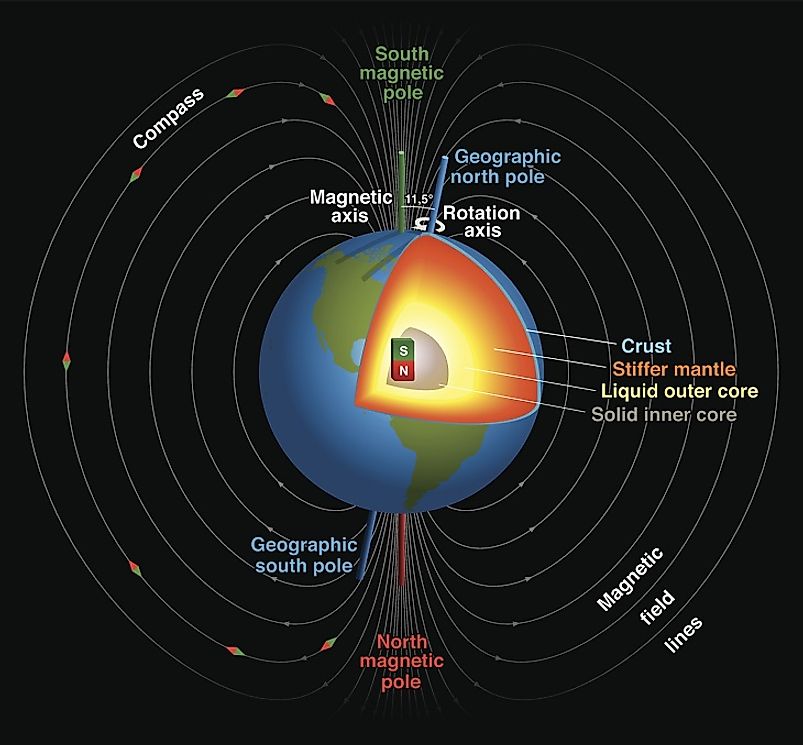Did You Know That The North Pole Is Moving As The Earth Becomes More Off Balance?

Rotational and Geographical Poles of the Earth
Like a giant spinning top, our blue planet rotates around an imaginary axis which intersects the Earth’s surface at the rotational North and South Poles. These rotational poles, however, do not necessarily correspond to the geographic poles of the Earth. This is because, as the Earth is not a perfect sphere, it wobbles on its axis, thereby constantly shifting the position of its rotational axis. Scientists use the position of stars and methods of satellite telemetry to measure the position of the Earth’s imaginary rotational axis, as well as by taking the long-term averages of these rotational positions. From there, they can estimate the location of the Earth’s geographical North and South Poles.
The Earth Wobbles?
Scientists studying the Earth’s rotation have observed that the rotational poles of the Earth are not stable, and actually shift positions due to their wobbling effect. In the past, the rotational axis would oscillate from east to west and vice versa, with an overall trend which indicated that the axis was shifting towards Canada. However, since 2000, the phenomenon has exhibited a dramatic change, and the Earth’s rotational axis is now on a steady shift in the eastern direction, heading towards the Greenwich Meridian in the United Kingdom.
The Cause?
As explained by Surendra Adhikari and Eirk Ivins, researchers at a U.S. National Aeronautics and Space Administration (NASA) laboratory in their recently published paper “Climate-Driven Polar Motion: 2003-2015”, published in the journal Science Advances, the eastward shift in the Earth’s rotational axis is coming about as a result of climate change. The scientists claim that, as ice melts in one part of the planet and collects in the form of liquid water in the other part, the shift in the mass is sufficient to make the Earth wobble worse, and tilt even more towards its heavier side. The fact that Greenland loses over 600 trillion pounds of ice each year and that western Antarctica loses 275 trillion pounds of ice annually can easily provide an estimate of the redistribution of weight occurring on the planet. However, this is still not able to explain the sustained shift of the Earth’s rotational axis to the east, since it is expected that the melted water will soon be distributed evenly to halt a sustained shift of the axis in a singular direction. The researchers thus explain that it is not just the melting of ice sheets at the poles, but also the high rates of evaporation and extractions of fresh water from the lakes and aquifers around the Caspian Sea region and in India, facilitated by both global warming and booming human populations, an that these are also shifting the Earth’s rotational axis to the right. Thus, this combined action of melting ice and changes in continental water storage is ultimately tilting the planet in one direction over the other.
A Lesson Learned
The shifting of the Earth’s rotational axis does not appear to have any current implications for life on Earth. If this shift remains steady over a longer period of time, however, it might become deemed necessary for scientists to recalculate the position of the geographical South and North Poles of our planet. Even though the eastward tilting of the Earth does not have any direct implications, it is indeed quite meaningful. This same polar motion data can also be used by scientists to make more accurate climate change predictions for the future. The dramatic shift also reveals the profound impact human activities are having on our blue planet. If such activities are able to send the planet off balance, it can be well imagined the impact such activities are having on the Earth’s climate, ecosystems, and biodiversity.











